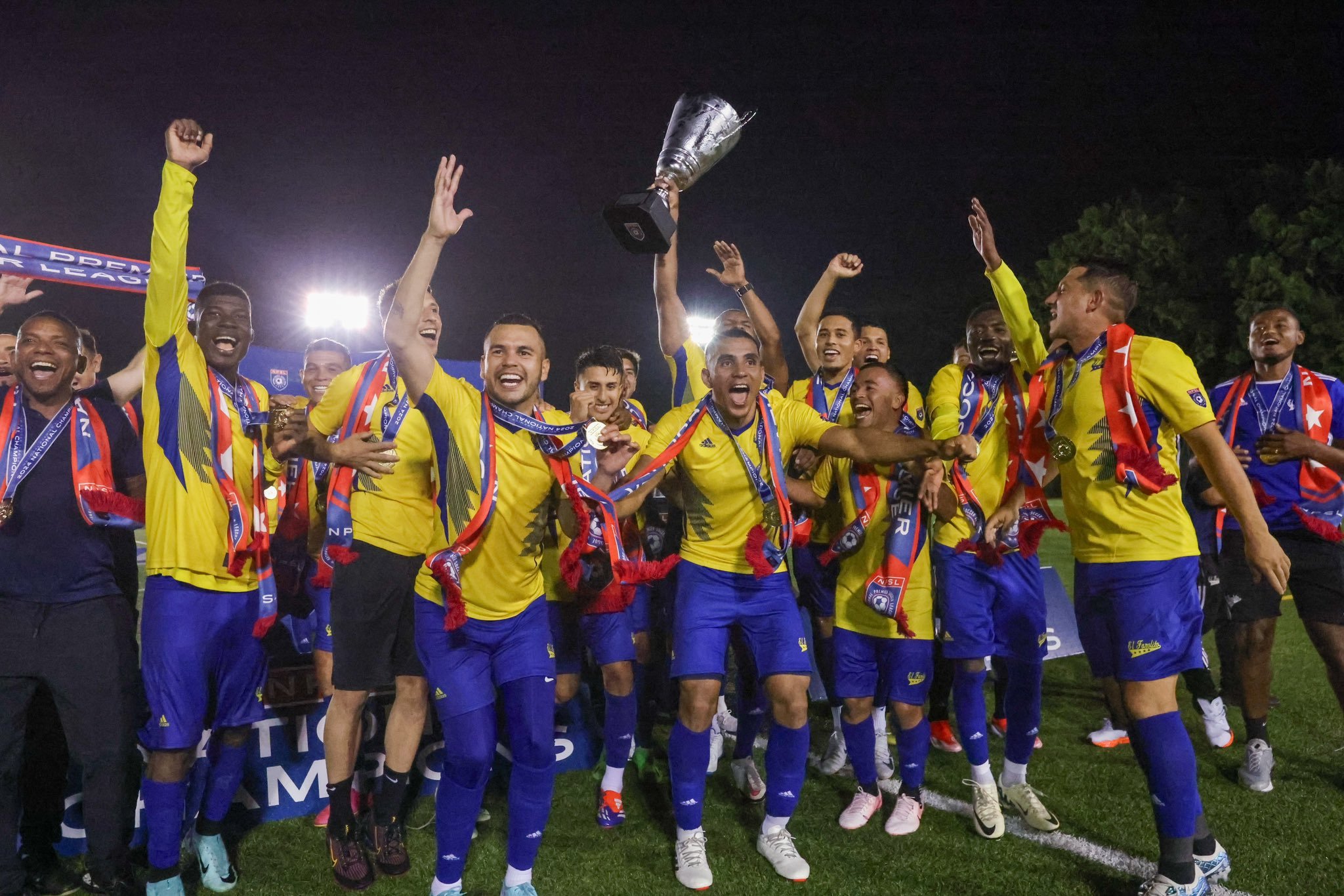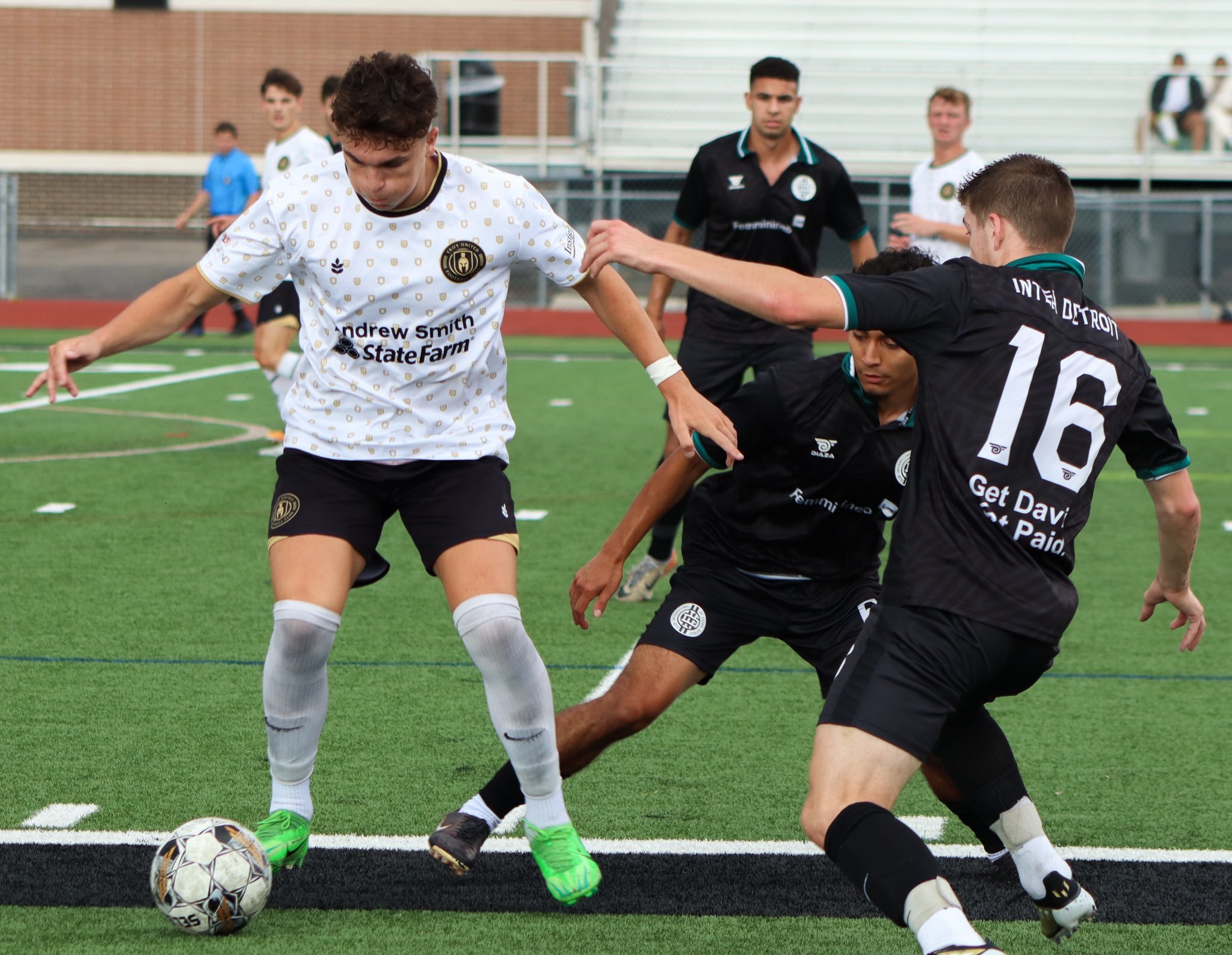The Year That Was
As we head into the New Year, I think it’s natural to look back over the year. They say hindsight is 20/20, though it seems some of us (and certain soccer leagues) could use some corrective lenses to learn some lessons from the past. We live in interesting times and 2024 added more to the intrigue and interest in the world of lower league soccer, both in the positive and negative columns.
The Highs
El Farolito celebrating the NPSL Championship. Photo credit: Mike Langish/NPSL.com
El Farolito - Yeah, just El Farolito. A name that’s become synonymous with lower league success. The club went wild in 2024. After qualifying for the US Open Cup proper out of the NPSL, the former champion (under another name) went on a run for the ages, knocking off two professional third-division sides (Timbers 2 and Fuego FC) before losing in the third round to USLC’s Oakland Roots. Even that match was a close one, ending 2-1 in extra time. Pair that with a success playoff run in the NPSL, ending in a national championship. El Farolito used 2024 to continue to build their lore as the little burrito club that knows how to win. Oh, and Dembor Benson leveraged his stellar Open Cup play into a cup of coffee in USL League One. Winner.
The League For Clubs - If you follow soccer warz at the lower league level, you already know how chaotic and wild the scene is. Leagues are clawing for supremacy, clubs are jumping back and forth between leagues, it’s the soccer wild west. And while I can’t say that the LFC will solve all the problems, the upstart league, led by a strong group of experienced club operators, could be a big step forward. The league claims that next year will see close to 50 teams added to its roster and IF they nail their launch, that number could skyrocket. Would be nice to see some stability and excellence come to the amateur divisions outside the USL umbrella and I’m betting on the success of this new launch.
The Flip also give us this classic photo.
USOC Coin Flip - When Tulsa Athletic and Chicago House were scheduled to face each other in the fourth qualifying round for the 2025 Open Cup, the question of who would host was on the table. Given the leadership of the two clubs (Sonny Dalesandro and Peter Wilt), it should be no surprise that it became a full-on production. The two negotiated a coin flip at a neutral site (Union, MO) and social media got to see Peter and Sonny make the drives from their respective hometowns to flip the coin. Chicago House won in Union and earned the right to host the match. While House may have won the flip, Tulsa won the match and earned a berth in the Open Cup. Someday I hope I get to write a book about this period in soccer.
Speaking of Open Cup - This year saw a record number of amateur teams enter qualification and, for a competition that MLS can’t seem to bother with, the Cup is alive and kicking! Qualifying for 2025 was a blast and we saw plenty of magic as the field was whittled down. Riding the crest of the wide-spread interest in the competition, US Soccer also released a series of posters designed by Blake Ink this year that paid homage to the magic of the competition.
The Growth of Soccer BlueSky - After years of dealing with Elon’s social media platform and the trolls and trash that live there, 2024 was the year of the great switch. Threads was first proposed, but Zuck is just barely better than Musk (while not a nazi, dude single-handedly killed American TikTok, so zero forgiveness from me). So while other platforms were suggested, BlueSky has taken the lead at the moment. The conversation is beginning to grow and there’s reason to hope that soccer social media doesn’t have to be so goddamn gross. If you haven’t joined, it’s time.
From Expansion to Runner-Up - Succeeding in the USL Championship is no easy task, but there were signs that Rhode Island would be competitive from the start. The club started with a GM and Head Coach with pedigree and smarts, former Bermudian soccer star Khano Smith, who built an impressive roster loaded with talent. All that talent showed throughout the team’s opening season, with Rhode Island finishing the season in the 5th spot in the East and headed into the playoffs. Facing a murderer’s row of Indy Eleven, Louisville City, and Charleston, Rhode Island strung together three wins and made it to the Championship final to face Colorado. While the team lost 3-0, the quality of its 2024 campaign makes 2025 all the more promising.
11,171 Fans - The success of the Annapolis Blues is something we’ve never seen before (in our 7 years of lower league coverage). When the team launched in 2023, it brought over 8,000 to its home opener. This year, the Blues opened their second season of play with over 11,000 fans in attendance (a record for the NPSL) and never looked back. Each match brought crowds of local fans this season and its hard to see anything but success in the club’s future. The club is part of the Michael Hitchcock family and its front office is full of experienced and smart soccer operators. Just last month, the team announced the formation of an amateur women’s side which will play in the USLW, then followed up with the movement of its successful men’s side to USL League Two. While the team hasn’t won titles yet, it feels like they are on the way.
Troy United in action in the MWPL. Photo Credit: Sonia Puri/Troy United
Regional Soccer Is On the Rise - While some national amateur soccer leagues may be struggling, regional soccer continues to grow. It’s become the safe, responsible approach to amateur soccer in many parts of the country. The Midwest Premier League continues to expand its map under a new commissioner. The Southwest Premier League keeps adding teams. The Gulf Coast Premier League just inked a deal to work with the League For Clubs. And the EPSL announced a plan for massive expansion down the eastern coast of the United States. There’s a lot of excitement in the regional soccer scene and, just as players begin their path locally, the next big soccer club could be playing next door in a regional league.
The Grass is Greener in Vermont - Earlier this year, Vermont Green announced that it had sold out its 2025 season tickets in 24 hours. That news was no shocker to lower league soccer fans, as the team is one of the hottest clubs in USL League Two. The team has been marginally successful on the field, with USOC qualification and a USL League Two playoff berth, the marketing has been spot on and earned the club fans from around the world. While Green’s growth is expected from the soccer community, the club is trying to build responsibly and taking a conservative approach that’s truly rooted in the local community. It’s a beautiful thing.
Super Launch - So I know that USL Super League is technically division one and therefore not part of a lower league recap, but hear me out. The USLSL launched this fall and has proven to be a wonderful addition to the USL pyramid. The number of players in the league previously on USLW, WPSL, and UWS amateur rosters says all you need to know about the quality of amateur women’s soccer in this country and the need for more paid roster slots. The Super League has announced expansion for 2025 and there’s plenty of amateur soccer players who will take full advantage of the opportunity. While the Super League may be division one, the benefit to amateur women soccer players across the country is unmeasurable.
The Lows
The NPSL - If we’re talking about the success of The League For Clubs, we have to talk about what their launch has done to many of the clubs’ former home. While the NPSL has long been seen as the strongest of the amateur leagues, over the last couple of years its has been plagued by complaints about faulty leadership. The recent jump of so many recognized clubs to LFC is only the most recent addition to the hemorrhaging of quality clubs the NPSL has suffered. Over the last few years, former NPSL teams have been joining the rise of USL2. Sure, the NPSL has sought to stem the flow through adding new clubs (Hitch can only do so much), but the quality of the replacements has been lacking in comparison with the teams they replaced. The NPSL needs to act quickly or 2025 will be more of the same.
Maryland Bobcats is without a league heading into 2025. Photo credit: Maryland Bobcats
NISA - While I must confess that I withdrew my attention from NISA in 2024, the fires continued to rage and I could still feel the warmth. More players complaining of broken contracts and terrible working conditions, more matches being cancelled or rescheduled as clubs scrambled to make it to the end of the season, all in line with the continued chaos in a league that launched with so much promise. How a league could let a situation get so bad that it suspended the regular season champions heading into the playoffs is beyond me. And, I should add, in a league that struggles for fan interest, the Maryland Bobcats were one of the few bright spots. I just don’t get it. Now there are reports of US Soccer stepping in, though the league denies it. Hard to say if there will be (or should be) a 2025 for the league.
The Slow Death of Journalism - Professional journalism seems to be dying. Cash-strapped readers don’t like paywalls and can’t (or won’t) pay for media, so active journalism continues to shrink. Soccer media in the lower leagues is 50% in-house content, generated by the leagues themselves (call it what it is, PR). The rest is primarily focused on USL Championship, which makes sense. For the rest of the leagues, its a smattering of coverage (usually around the Open Cup or a scandal) from paid journalists. Bloggers and podcasters make up the rest. For ourselves, we’re spread about as thin as we can be and struggling to fill the gaps. There are national leagues with no one covering them. Dark days.
- Dan Vaughn



